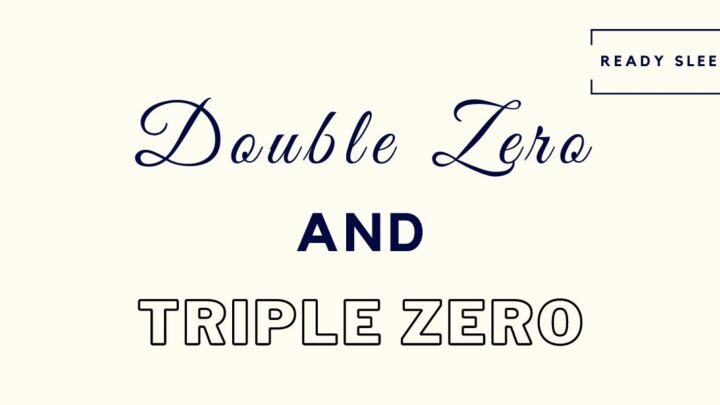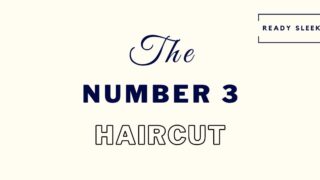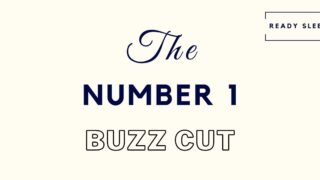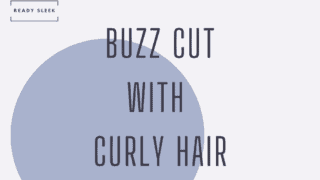Fades – great to look at, but boy can the names be confusing. Here’s everything you need to know about double zero and triple zero fades.
Let’s get to it.
What Is A Double Zero Fade?
A double zero fade is an effect where the hair gradually transitions from longer hair at the top of the sides and back down to a “double zero” length at the bottom. The double zero length is achieved using a zero-gapped clipper blade.

The seamless blending over longer lengths into shorter lengths is what gives the fade its characteristic appearance.
A double zero fade is simply one where the shortest length (i.e the length at the bottom) is a double zero.
While the term isn’t always used properly, it’s important to know what “zero-gapping” actually is.
To zero gap a pair of clippers (or a trimmer) is to closely align the guide (stationary) blade with the cutting (moving) blade.
Essentially, this allows you to trim down even closer than you’d be able to by simply using a lone clipper blade that hasn’t been zero-gapped.
This allows you to cut down very short – arguably as close as you can get without using a razor.
Because of this, double zero fades can be pretty striking and bold. The shortest length of the fade almost looks shaved.
As a result, there’s a great contrast between this and the longer hair it transitions into as you go up the sides and back.
But what’s a “zero fade”?
The definition can vary, but the most popular one is that it’s simply a fade where the shortest length is achieved using a lone clipper blade that hasn’t been zero-gapped.
I’ve written more about zero fades in this article, if you’re keen to learn more.
Essentially, it isn’t quite as short as a double zero fade because the blades won’t have been zero-gapped.
Going one step further, a double zero fade is short but isn’t quite as short as a skin fade where the shortest length is essentially shaved skin.
In order of closeness (i.e shortness):
Zero Fade – Short
Double Zero Fade – Shorter
Skin Fade – Shortest
Here are some examples of the double zero fade in all its glory.
Double Zero Low Fade
The double zero low fade has the shortest length at the bottom of the sides and back clipped using a zero-gapped clipper blade. It then starts to blend into longer lengths just above the top of the ear.

Image From Deposit Photos
Just like any other fade, double zero fades can be “low”, “mid”, or “high”. It all depends on where it starts to transition into longer lengths.
The lower the fade, the more subtle it looks.
A low fade will usually start to transition into longer lengths just above the ear, which means that only a small part of the sides and back will be trimmed down to its shortest length.
In this case, this length is the “double zero”.
The picture above is borderline between a low fade and a mid fade, but hopefully, you get my point.
Double Zero Mid Fade
The double zero mid fade starts to transition from the “double zero length” (achieved using a zero-gapped blade) into longer lengths approximately an inch above the ear.

Image from Deposit Photos
As more of the back and sides are cut down to the shortest length of the fade (the double zero), a mid fade is more striking and in-your-face than a low fade.
It’s a great option if you’re looking for a more attention-grabbing style.
As the fade is so short, the contrast between the double zero mid fade and the longer hair on top is a pretty emphatic statement.
It’s worth pointing out that with any of these fades, you can do whatever you want with the hair on top.
You could buzz it short, quiff it up, style a pompadour – it doesn’t matter.
Of course, the more full and voluminous the hair on top, the greater the contrast with the double zero fade at the sides and back and the more eye-catching the style will be overall.
Double Zero High Fade
The double zero high fade transitions from “double zero length” (achieved using a zero-gapped blade) up into longer lengths at approximately the level of the temples.

Image From Shutterstock
A high fade will always be very attention-grabbing simply because of how much of the sides and back are clipped down super short.
But the double zero length is about as short as you can go without shaving. As you can imagine, a double zero high fade is very eye-catching indeed.
It probably isn’t one for first-time faders. If you’re dipping your toes into faded styles, it’s probably best to start off with a mid or a low fade before diving headfirst into a double zero high fade.
If you’re a fan of the look, it may then be worth considering.
Double Zero Vs Skin Fade
Essentially, a skin fade is shorter than a double zero fade. A double zero fade will always leave behind very short stubble as it’s achieved using a zero-gapped clipper blade, while a skin fade will be clean-shaven at its very shortest.

A skin fade has the shortest length of the fade shaved all the way down to the skin with a razor before transitioning into longer lengths as you go up.
The shave can be done using an electric razor or for an even closer shave, a straight razor.
Double zero fades are short, but not that short. You could say that it’s about as short as you can get with a clipper.
By zero-gapping the clipper blades, you’re leaving barely any room in between the cutting blade and the stationary blade. This cuts very close, but not quite as close as a razor would.
So, how do you choose between a double zero fade and a skin fade?
It really depends on how close you want to go.
A double zero fade can still produce a very clean finish, although you’d still probably be able to notice a slight “5 o’clock” shadow at the very bottom.
A lot of people don’t mind this. The finish is neat enough and you don’t need to use a razor to produce it. There are plenty of people who simply hate the feel of a razor.
If this is you, consider a double zero fade instead.
If, however, you want the cleanest and neatest finish – a skin fade may be the one for you.
What Is A Double Zero Haircut?
A double zero haircut is any haircut where the zero-gapped blades of a clipper are used. Usually, this refers to the sides and back, and the term is often in the context of fades.
It’s unusual to get a “double zero” haircut all over (i.e a double zero buzz cut), simply because it’s such a close trim.
However, if you’re looking for the closest and shortest buzz cut all over without having to shave, it is an option.
It’s usually best to get it done by a barber. Because you’re trimming down so close, you’d rather get it done by a professional.
It’ll also just save you time.
What Is A Triple Zero Fade?
A triple zero fade is an effect where the hair gradually transitions from shaved skin at the bottom of the sides and back into longer lengths as you go upward. A triple zero fade is essentially the same thing as a skin fade.
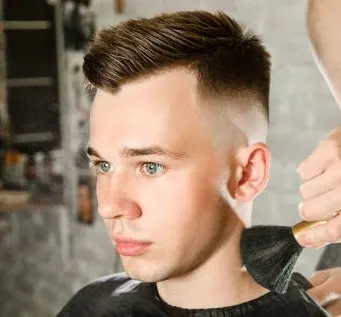
While the terminology can be endlessly confusing, it’s just important to bear in mind that people can refer to the same style using different terms.
A triple zero fade should always be thought of as exactly the same as a skin fade. In fact, “skin fade” is by far the more popular term to use for it and the one you should use wherever possible.
It’ll make discussions with barbers a lot less awkward and confusing.
Just like any other fade, a “triple zero fade” can be a “low”, “mid”, or “high” fade.
A low triple zero fade starts to transition from shaved skin into longer lengths just above the ear. As only a small area of the sides and back is shaved, it’s the most subtle form of the triple zero fade.
A mid triple zero fade starts to transition into longer lengths around an inch above the ear.
A high triple zero fade has most of the sides and back shaved down to the skin, only starting to transition into longer lengths at around the level of the temples.
With high triple zero fades, as so much of the sides and back are shaved, it’s a very bold appearance.
With both triple zero fades and double zero fades, you can do absolutely anything you want with the hair on top.
The options really are endless.
Ultimately, the “fade” aspect is defined by the sides and back. The top could be absolutely anything you want it to be.
Conclusion
There you have it.
Hopefully, everything you wanted to know about both double zero and triple zero fades.
Enjoy.
Ready Sleek founder. Obsessed with casual style and the minimalist approach to building a highly functional wardrobe. Also a fan of classic, vintage hairstyles.

